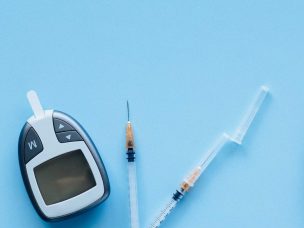Diabetes
Comorbidities Explored in Palmoplantar Pustulosis
Patients with palmoplantar pustulosis (PPP) have an overlapping comorbidity profile with patients with psoriasis vulgaris, according to a study published in JAMA Dermatology. Dong Hyo Kim, M.D., from the Seoul National University College of Medicine in South Korea, and colleagues conducted a nationwide population-based cross-sectional study involving Korean patients diagnosed with PPP, psoriasis vulgaris, or...
Dr. Greg Williams: Diabetes Podiatry
I can remember when I was in training, which was pretty much like, from ‘93, to pretty much 2001. And diabetes at that time, was at the point where we started just to get to know the effects of diabetes, not only on other organs of the body, but especially the feet, the two components...
Dr. Greg Williams: Health Disparities in African American Diabetes Care
My name is Greg Williams, born and raised in New Orleans. So it’s great to be the hosts of this wonderful meeting and organization thats the National Medical Association. I’m actually the co chair for the podiatry section. I’ve been in practicing for 24 years in the specialty of foot and ankle, and a unique...
Type 2 Diabetes Linked to Increased Risk for Colorectal Cancer
Greater associations seen for those without colonoscopy screening, with smoking history, and for recent diabetes diagnosis Type 2 diabetes is associated with an increased risk for colorectal cancer (CRC), with increased associations for those without colonoscopy screening and with smoking history, according to a study published online Nov. 14 in JAMA Network Open. ...
Dr. Greg Williams: Podiatry Education in Medical School
There should be a course, just on diabetic foot infections. Since diabetes is affecting the feet more than any other part of the body, we need to be able to correlate that as far as we’re dealing with diabetes, and what can happen as far as for eyesight, loss of vision, what can happen with...
Threshold of Diabetes Diagnosis May Be Too High for Women Under 50
Additional 17 percent of undiagnosed women aged younger than 50 years could be reclassified as having diabetes mellitus. Women aged younger than 50 years have a markedly lower hemoglobin A1c (HbA1c) distribution than men, according to a study published online Sept. 30 in Diabetes Therapy to coincide with the annual meeting of the European Association for the...
Once-Weekly Insulin Icodec Superior for HbA1c in Type 2 Diabetes
Icodec with app superior to once-daily basal insulin analogues for change in glycated hemoglobin For insulin-naive adults with type 2 diabetes, once-weekly insulin icodec (icodec) titrated with a dosing guide app (icodec with app) is superior for change in glycated hemoglobin A1c (HbA1c) level versus once-daily basal insulin analogues (OD analogues), according to a study...
Hemoglobin Glycation Index Linked to NAFLD in Patients With Diabetes
A recent study confirms the link between higher hemoglobin glycation index levels and the risk of developing non-alcoholic fatty liver disease in patients with type 2 diabetes. For healthcare providers, understanding this association may offer a novel avenue for identifying patients at higher risk for liver disease. Higher hemoglobin glycation index levels were significantly associated...
Gender Disparities in Metformin Treatment for Type 2 Diabetes Uncovered
New insights into how men and women differ in metformin treatment patterns for type 2 diabetes suggest opportunities for personalized treatment strategies. These findings could potentially lead to more effective dosing regimens and management plans that take into account the unique physiological characteristics of each gender. A recent study of 11,508 metformin initiators, of whom...
More Medical News














